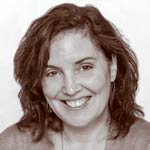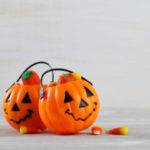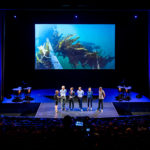In the decades since a dozen liver specialists converged at Chicago’s Drake Hotel in 1950 to share their research on liver disease, that annual gathering — rebranded as The Liver Meeting early in its history — has evolved into a keystone event in the field of hepatology, attracting around 10,000 physicians, researchers, and others each year.
Given its long history and dedicated attendee base — nearly half of Liver Meeting attendees return each year — it might seem surprising that the meeting had a perception problem. Yet many who attended the meeting didn’t know the organization behind it — the American Association for the Study of Liver Diseases (AASLD). “AASLD always has had a lot more nonmembers attend our meetings than members,” said Julie Deal, AASLD’s deputy executive director. “People didn’t necessarily realize that AASLD was the convener of The Liver Meeting. There are thousands of doctors in the world that may not be [AASLD] members but are hugely interested in the science and education we have to offer.”
‘aasld 365 days of the year’
According to Deal, who joined AASLD in 1999 as the primary planner for The Liver Meeting, data collected via focus groups and surveys showed that even when attendees were aware of AASLD’s role in organizing the event, the association needed to make a better connection with them. “People looked at AASLD as ‘The Liver Meeting,’” she said. “We wanted to dispel that myth. We were trying to get out there the merits of year-round membership. We wanted to make sure they know we’re AASLD 365 days of the year.”
Even in the specialized world of hepatology, AASLD’s annual meeting has competition, including the International Liver Congress, a meeting hosted by the European Association for the Study of the Liver. AASLD, Deal said, felt the need to better establish itself and create “a more coordinated presence” at The Liver Meeting. So in 2013, the association hired Reingold Inc., a Washington, D.C.–based communications firm that works with nonprofits and associations on rebranding and identity projects, to give the meeting a makeover.
“Their meeting was universally well-regarded, but everyone knew the meeting and didn’t know AASLD,” said Reingold Vice President Joseph LaMountain. “If you have 10,000 people coming to your meeting, and only 4,000 are members, there’s clearly an opportunity there to get new members. What we really saw was a couple of big opportunities — one related to the branding and messaging, and the other on the look and feel of the meeting.”
The makeover timeline was Reingold’s first major challenge. Coming on board barely four months before that year’s Liver Meeting in Washington, D.C., “was like drinking water from a fire hose,” LaMountain said. “We began with them in July for a meeting that was taking place in November.”
To hone the program’s theme — “and transform the meeting into a 21st-century medical conference” — LaMountain’s team identified 10 to 12 key messages that attendees absorbed during the four-and-a-half-day meeting, and “tried to bucket that content to create sharper messaging.” AASLD was, he said, “in the habit of wanting to talk about every service at the same time.”
That focus led to more concentrated programming. “We created event themes and taglines,” Deal said, “and developed tracks for different constituencies, and shortened programming where it was too long.”
EVENT REDESIGN
When it came to the meeting’s visuals, Reingold noticed that most signage either didn’t have the AASLD logo or featured it too subtly for attendees to make a clear connection. By positioning the AASLD mark above the meeting’s name on both printed and digital signage, as well as “making the colors much more bold and more assertive” (see Breakout, at right), Reingold visually reinvigorated the meeting and connected the dots between the association and The Liver Meeting. The rebranding also extended to pre- and post-con components such as video promotions on AASLD’s redesigned website and its print collateral.
To grow awareness of the association’s offerings, the AASLD Pavilion on the exhibit floor featured activity stations where attendees could explore its journals, research, and special-interest groups. “We really wanted people to connect there,” Deal said.
AASLD also began experimenting with livestreaming in 2013, which it plans to expand during this year’s meeting at San Francisco’s Moscone West Convention Center on Nov. 13–17. And this year, registration pricing has changed from an à la carte model to bundled packages that suit different audiences. “We got a lot of feedback that people were tired of being nickel-and-dimed,” Deal said. “It’s going to cost a little bit more money, but you’ll get more value.”
The partnership between Reingold and AASLD continues. LaMountain said that while it may not be unusual for an association to experience an identity crisis, the fact that AASLD has “done something about it is unique.”
Has that effort paid off in terms of increased membership? Yes, although Deal stops short of attributing that entirely to the meeting itself. “I don’t think that we have the data to say for certain that the makeover was the direct cause,” she said. “The makeover was focused more on positioning AASLD as the cutting-edge leader for everything liver-related.”





